Why Does My Cat Stare at Me Without Blinking?
If you can’t figure out why your cat is staring at you, pay closer attention to their body language. Here’s what to look for.
If you can’t figure out why your cat is staring at you, pay closer attention to their body language. Here’s what to look for.
by Kelly Villa, | June 7, 2024

buritora / Adobe Stock
It’s a look most cat parents know well: the cat glare. As creepy or intimidating as it may look at first, however, a cat’s stare can mean a number of different things — and not all are bad. So what does it mean when a cat stares at you? Well, it could mean a number of things, from your cat expressing their need for attention, curiosity, distress, or even feelings of pain.
There are six common reasons why your cat might be staring at you.
1. They want attention. Especially if your cat’s stare is mixed with some slow blinks — a behavior that communicates that your cat doesn’t feel threatened by you — their stare might be their way of asking for some cuddles. They may also be trying to get your attention. For example, is your cat staring at you around their mealtime? It might be a sign they have an agenda.
2. They’re curious. Your cat’s stare may just be their way of observing you. Especially if your cat is young and/or new to your home, they may stare to try to gather information about their new family and home.
3. They’re distressed. The best way to determine a negative meaning behind your cat’s glare is to observe the rest of their body language. Take their pupils, for example. “A relaxed cat will have thin, almond shaped pupils,” Joey Lusvardi, a certified cat behavior consultant at Class Act Cats, told The Wildest. “A cat that is anxious, fearful, or stressed will have wider, dilated pupils.”
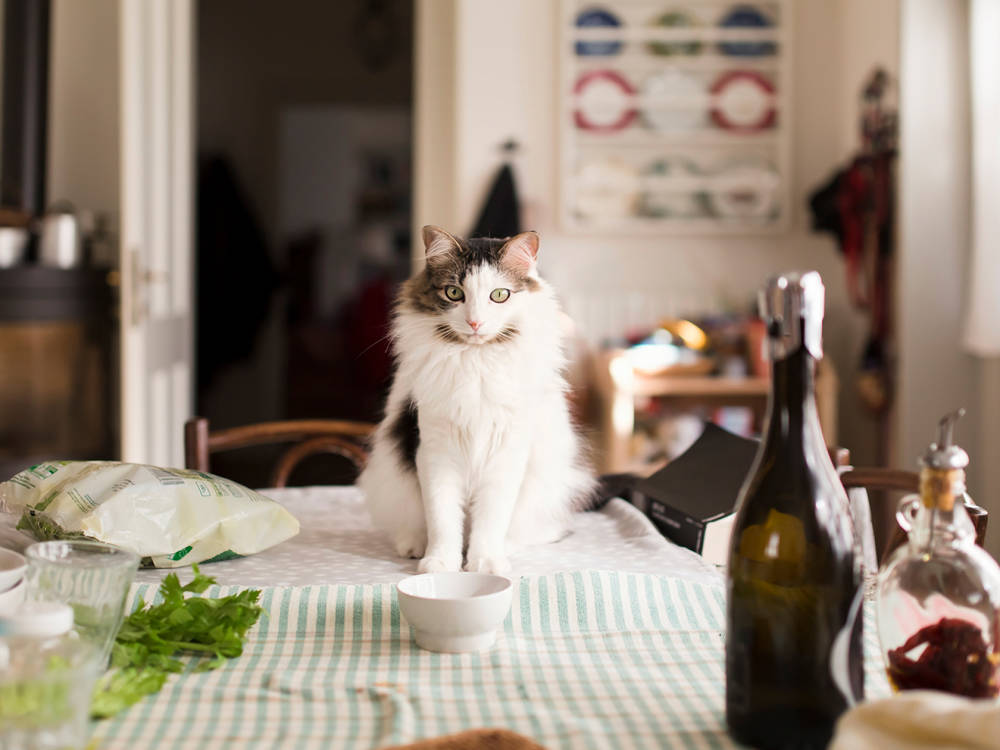
...Is it something you said?
4. They’re feeling unsafe. Similarly, your cat might be feeling unsafe, which can be determined from body language including their ear position (facing the sides or pinned back) and their vocalization (growls are not a good sign).
5. They’re establishing dominance. Especially if accompanied by aggressive behavior or body language, including a tucked tail, it’s best not to stare back at a staring cat and give them space.
6. They’re in pain. Because they obviously can’t use their words, cats are limited in how they can express how they’re feeling, but squinting or staring, especially if accompanied by a stiff posture, can indicate they’re not feeling well and could warrant a trip to the vet.

Kelly Villa is a freelance writer and contributor to various pet publications.
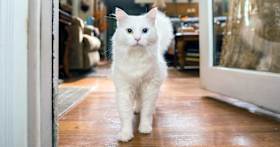
Behavior & Training

Behavior & Training

Behavior & Training
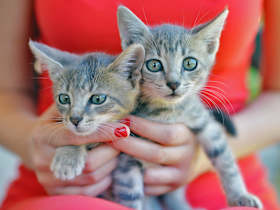
Behavior & Training
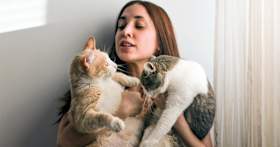
Behavior & Training
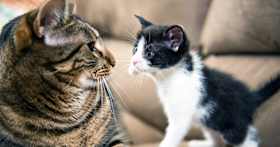
Behavior & Training
Want your older cat to warm up to a new kitten? Start with proper introductions.

Behavior & Training

Behavior & Training
The road to getting your cat and dog to get along can be rough. Thankfully, there are easy steps you can take to make it way less rocky.
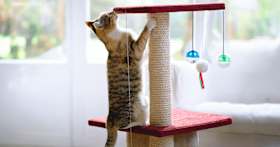
Behavior & Training
Is your new cat scratching everything in sight? It’s natural, but not necessary. Here are proven ways to discourage that behavior.